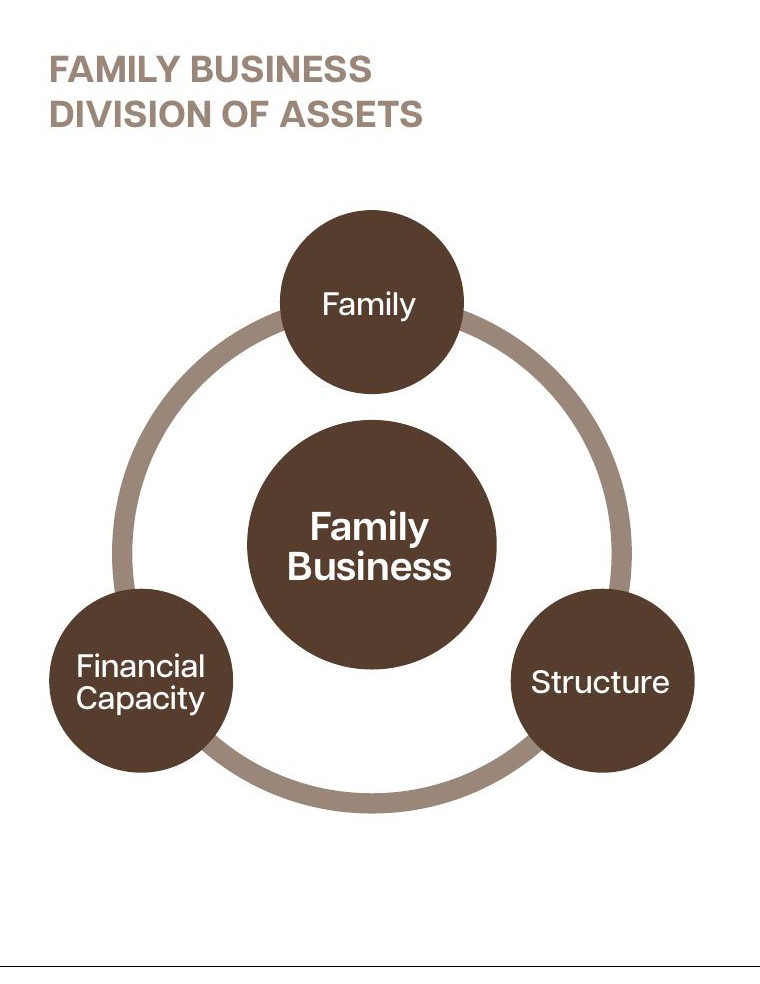FEATURE succession
BUSINESS
SUCCESSION
Keeping it in the family is a process that needs to be started sooner rather than later.
Words Reagan Manns, RSM

WHY is succession planning so important? It sounds as though we’re asking an obvious question. However, often when we start talking with clients about their succession plan, many indicate there’s no need to discuss it. It’s either “too hard” or they know “exactly what is going to happen to the farm when I die”.
Even if the older generation has a clear idea of what succession looks like, it’s still imperative the plan is discussed and formalised. Key individuals need to have an opportunity to voice their opinions on the future of the family assets and how their role within the business might change over time. A good succession plan should also be revisited at regular intervals, especially around the time of major life events. And, remember, the earlier you start, the greater the number of opportunities available.
Family Dynamics
Modern society has presented businesses with many new challenges. It’s no different for succession planning.
The dynamics today are very different to previous generations, there are: more economic constraints, greater expectations, differing goals and everyone is living longer.
The fastest growing group of farm operators are 65 years and over, with the average age increasing from 44 to 56 in the past 30 years. This means older generations are remaining actively involved in the business for longer, while the next generation is either coming back later or not at all.
An all-too-common scenario where the challenges of this age gap arise is when the son and daughter-in-law return to the family farm. It’s now far more common that they’ll both be returning with a tertiary education. Although both are keen to work, they often have very different priorities with work-life balance, something the older generation may struggle to understand. With such a persistent shortage of labour in rural areas, this can create friction within the family group because, in many cases, the workforce is limited to the family members.
Another complication of the younger generation returning later in life is with respect to the ‘pecking order’: who is making the decisions, who is delegating the work and who is doing the work. Returning members may assume they will take up certain roles, but they may not have the necessary experience or skillset.
A good succession plan should take this into account. It isn’t just about passing over the assets and debt. It’s about equipping the next generation with the tools required to carry the business into the future. The plan should consider managerial issues, such as who is currently running the office and who will in the future. Perhaps your accountant will need to assist, educating on what’s involved in running the business and how the structure works. Or maybe the older generation, who currently runs the business, can upskill the next generation in conjunction with a farm consultant. This will help to ensure the next generation has the appropriate skillset when it’s time to take over and they also inherit generations of firsthand knowledge and experience.
Economic Volatility
Further complicating the succession plan, businesses are now faced with much greater economic volatility than in previous years. The global pandemic, unstable political relations with trading partners and, more recently, the war in Ukraine... all these issues contribute to a more volatile economic environment. With this comes uncertainty, which is the exact opposite of what you want when building a long-term plan.
Economic volatility isn’t a new phenomenon. However, over the past two or three decades the economy has become increasingly globalised and we have become more dependant on overseas trading partners on both sides of the supply chain – be it income or expenditure.
Recent major global events have triggered many governments (including ours) to implement unprecedented levels of government stimulus. This is driving higher inflation and putting pressure on production costs at a rate we have not experienced in almost 30 years. Income is also more volatile than ever.
The balance of this is that, in many cases, we have seen strong capital appreciation of farming land. However, this is a double-edged sword. While it certainly helps equity levels on the statement of position, it can hamper the genuine farmer from developing as the capital appreciation appears to be disengaging from the income earned. The return on capital is now very low and purchasing further land based on increase earnings is not sustainable in many instances.
Division of Assets
This brings us to the elephant in the room: the division of assets. In most cases, the farm is the main or only asset the family group has and to divide it up often compromises the viability of the business, particularly with increased economic volatility. This presents one of the biggest challenges in the succession plan because we must balance the needs of the business against the needs of the retiring individuals and the needs of the off-farm siblings. The diagram (see Division of Assets, below right) illustrates the dilemma that most family businesses face when determining a division of assets.
When trying to get the right balance, consideration must be given the financial capacity of both the older and younger generations and how this interacts with the current and future structure of the family group. It’s also important to consider the off-farm family members. While they may not be actively involved on the farm, they are still part of the family group and have an expectation to be included in the division of assets. With the substantial increase in the value of farming land in recent years, it’s becoming more challenging to reach an equitable division of assets between on- and off-farm siblings. To manage this inequality, it’s important to ensure that there is clear communication between all parties with respect to what will be a fair division of assets and possibly look at implementing clauses within the succession plan to balance any inequality in the event the farm is sold shortly after control is passed to the next generation.
Retirement often tends to go hand-in-hand with the division of assets. This is a process that most farmers find difficult as often the farming enterprise is not only their primary asset, but also the culmination of a lifetime’s work. A large part of the financial capacity for the retiring generation is consideration for financial security. As they begin to wind out of the business, security over the assets and minimisation of risk become their primary concerns.
“ A large part of the financial capacity for the retiring generation is consideration for financial security ”

Ultimately, the succession plan will involve the transfer of ownership and control of assets to the next generation. When the older generation were in control of the business, they made the decision on the equity and borrowing levels. In passing control to the next generation, there’s a possibility that previously secure assets may be exposed to leverage that the retiring generation are not comfortable with. There are strategies to address financial security, a lot of which can be built out into a deed of family arrangement.
“ … if adequate time is given to implement a succession plan, steps can be taken to minimise or completely mitigate some… tax obligations ”
However, this also highlights why it’s critical for everyone in the family group to have a good understanding of the ownership and structure of the business. Until you know how the business is structured, and where the assets and debt sit within the family group, how can you effectively plan how the transfer of ownership will occur?
Aligned with this understanding is consideration of tax implications of transferring assets. A lot of tax liabilities, whether it be capital gains tax, income tax, transfer duty, etc, will be dependent on your structure. All these factors should be considered. In some instances, if adequate time is given to implement a succession plan, steps can be taken to minimise or completely mitigate some of these tax obligations.
Next Steps
So where and when do you start? Wherever you are in the business cycle, the time to start is now. One of the primary drivers behind the success or failure of a succession plan is communication. If you aren’t sure where to begin, the best thing you can do is to start having some frank conversations about the future. You don’t have to start with the most challenging discussion (asset division), you can make a meaningful start by simply having conversations around the future day-to-day management and getting an idea of family members’ goals.
Succession planning is not an event, it’s a process, and it will take time (possibly years). It’s important not to rush this process. There are many aspects to consider and different parties take different amounts of time to process and work through available options. It’s common for these discussions to be facilitated by a third party, who can help to explain the overall structure, especially in the initial stages.
A succession plan is so much more than a transfer of assets and control, and by focusing on just this aspect of the plan, many families put it into the too-hard basket. Instead, think of succession planning as starting the process of handing the batten over to the next generation. You want it to be as smooth as possible to ensure nothing gets dropped, and the key to this is clear communication and planning.
FOR MORE INFORMATION
Contact your local RSM advisor or your trusted advisor/accountant.
Succession Statistics
Facts on communication within farming businesses and the transfer of farming assets:
• 42% had no discussion with the spouse on the planned transfers
• 63% had no discussion with the son who was back home working on the farm
• 84% had no participation with the on-farm daughter-in-law.
There are numerous reasons why there is such a lack of communication with respect to the farm succession, some are valid, such as asset protection, or maybe potential family law issues. However, ultimately, some level of clear communication is required to ensure that all parties’ wants and needs are considered.
Source: University of Sydney